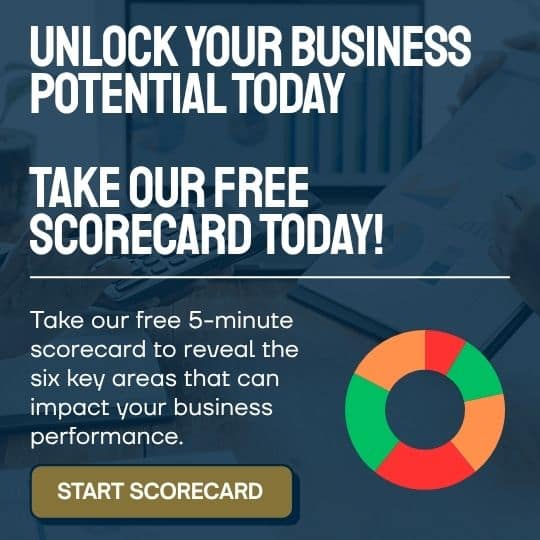Saying no in business might feel awkward or uncomfortable especially if you’ve built your reputation on being reliable, responsive, and available. But here’s the truth every growth-minded business owner must learn:
Every “yes” to the wrong thing is a “no” to what matters most.
If you’re feeling overwhelmed, pulled in a hundred directions, or stuck in reactive mode, it’s likely because you’re saying yes too often to the wrong people, projects, and priorities.
Let’s explore how to reclaim your time, energy, and focus by mastering the art of saying no.
Why Saying No Is So Hard for Business Owners
Most owner-operators didn’t start their business to become gatekeepers. You likely built your business by saying yes to every opportunity, request, and challenge. That hustle got you here. But now, it’s keeping you stuck.
Here’s why saying no is tough:
● People-pleasing: You don’t want to let anyone down clients, staff, family.
● FOMO (Fear of Missing Out): What if you lose a big opportunity?
● Guilt: You feel bad prioritising your needs over others.
● Lack of boundaries: Without clear decision filters, everything feels urgent.
But at this stage of your business, your time is your most valuable asset. Protecting it is not selfish it’s smart.
The Hidden Costs of Always Saying Yes
When you’re always available and agreeable, the costs show up in subtle but powerful ways:
- Burnout
You stretch yourself thin, working long hours, and slowly losing energy and passion. You can’t lead a thriving business from a place of exhaustion. - Diluted Focus
Every “yes” to a low-priority task steals time from the high-impact work like strategy, sales, or leading your team. - Inconsistent Service
When your plate is too full, things slip. Deadlines are missed. Quality drops. Reputation suffers. - Team Confusion
If you’re saying yes to everything, your team doesn’t know what matters most. They follow your example and soon, everyone is overcommitted.
When You Should Say No
Here are common situations where saying no is often the best business decision:
● Clients who aren’t a good fit (scope creep, bad vibes, don’t value your time)
● Projects outside your sweet spot that cause more stress than revenue
● Opportunities without ROI (free work, endless meetings, speculative proposals)
● Requests that break your structure (last-minute changes, out-of-hours work)
Saying no doesn’t mean being unhelpful it means being intentional.
How to Say No Without Burning Bridges
Saying no in business doesn’t have to be harsh. It can be respectful, honest, and still maintain relationships.
Here are five ways to say no like a pro:
- Be Clear, Not Vague
Avoid soft maybes. Say, “Thanks for thinking of me, but I won’t be able to take that on right now.” - Use Pre-Made Boundaries
Have standard policies: “We don’t start jobs without a signed agreement,” or “We don’t do weekend callouts unless it’s urgent.” Boundaries protect you from having to make emotional decisions on the spot. - Offer Alternatives
If it makes sense, refer them to someone else or suggest a different approach: “That’s not something we do, but here’s someone who might be able to help.” - Delay Before Deciding
Buy yourself time: “Let me check the schedule and get back to you.” This gives you space to evaluate before committing. - Practice
It gets easier. Start by saying no to small things a rushed deadline, an extra meeting, a task that’s not yours.
Real-Life Example
One of my clients, a local service provider in Sydney’s Inner West, used to accept every job that came in even those that were outside his ideal location or service scope. He was working 60+ hour weeks and his team was always stretched.
We worked on defining his “ideal client” profile, introduced a service zone policy, and created a standard pricing structure. He started politely declining jobs that didn’t meet the criteria.
In three months, his stress levels dropped, margins increased, and he reclaimed 12 hours a week. His team was more focused, and customer feedback improved.
Tools That Help You Say No (Without Saying No)
Use automation and structure to help reinforce your boundaries.
● ● Email Templates: Prepare polite but firm scripts for declining offers or changing scope.
● Scheduling Tools: Block out non-negotiable focus time in your calendar.
● Qualifying Forms: Use online forms to pre-screen enquiries only the right leads get through.
● Team Alignment: Train your staff to uphold the same boundaries you do.
Saying No Makes You a Better Leader
Your team is watching how you respond to pressure, requests, and opportunities. When you show discipline in your decisions, they learn to do the same.
Leaders who say yes to everything appear busy but leaders who say no wisely are the ones who actually get things done.
Practice the Power of Pause
When you’re unsure whether to say yes or no, try the Power of Pause:
- Ask: Is this aligned with my goals?
- Ask: What will I have to say no to if I say yes?
- Ask: Will this matter in 3 months?
If you can’t confidently say yes to all three, it’s probably a no.
You Don’t Need to Do It Alone
Learning to say no isn’t just about boundaries it’s about clarity. What matters most to your business? Your team? Your lifestyle?
At Business Coach Mark, I help business owners build clear decision-making frameworks so they can stop spinning their wheels and start making meaningful progress.
→ Ready to regain control of your time and priorities? Book an Initial Chat with Mark today.






